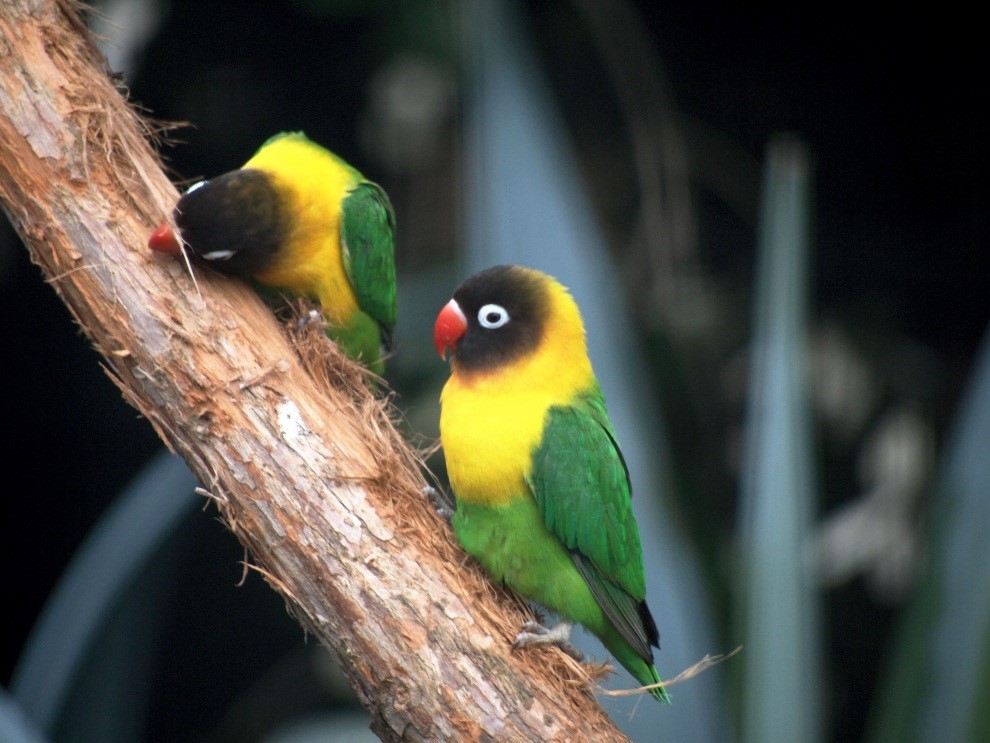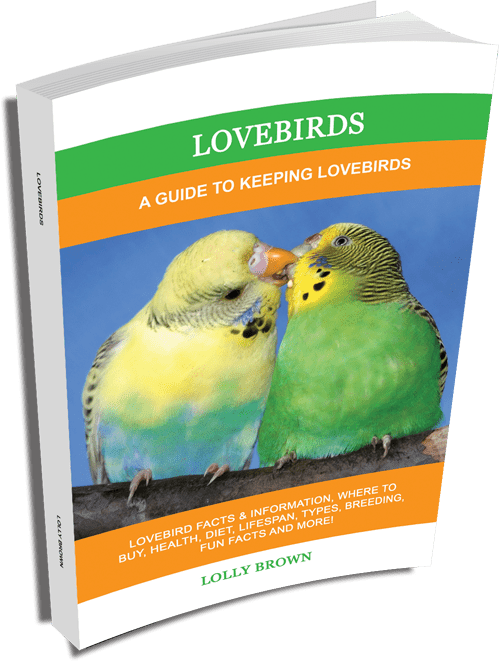CHAPTERS
Navigate to chapter
► Chapter One: Basic Biological Information
► Chapter Two: Different Lovebird Species
► Chapter Three: Acquiring, Feeding and Housing Lovebirds
► Chapter Four: Grooming and Keeping Your Lovebirds Happy
► Chapter Five: Handling, Taming, and Training Your Lovebirds
► Chapter Six: Keeping Your Lovebird Healthy
► Chapter Seven: Basic Breeding Tips
Chapter One: Basic Biological Information

Lovebirds are named as such because they are one of the few animal species that are monogamous when it comes to finding a mate. They also develop a loving and strong bond with their chosen pair. However, as sweet as it may sound, there are some instances where this is not the case. Some lovebirds don’t bond with one bird forever because of incompatibility. Nonetheless, when these birds bond with their mates, it tends to be long – term compared to other animal species. If ever you choose to keep a male and female lovebird, you’ll eventually see that they’ll snuggle and preen one another, and even provide food for each other.
Lovebirds are also called “pocket parrots” because they resemble the physical characteristics of parrots as well as their intelligence and abilities. Don’t be fooled though because that means that these birds are clever, and because of that they tend to be quite bossy with other bird species and family members. Some of them can imitate human voice but unlike parrots, they can’t articulate it or most of them never learn to speak.
They form great and strong relationships with their owners making them one of the most popular bird species as pets but it’s also important that they find a mate to spend time with aside from their keepers because if not, then you as the owner will need to fill in their strong desire for affection. If you don’t spend time with your lovebirds, they’ll have a tendency to become aggressive, and it’ll be very hard to gain their trust and love which is why if you don’t have the time to do that, then it’s best to get a pair of these so that they won’t be lonely, although starting with one is highly recommended and ideal for newbie keepers.
These birds are cheerful and energetic. They come in different colors, sizes, and types. This chapter will focus on the basic biological information of lovebirds and the things you can expect to learn as we guide you on how to take care of them.
Lovebirds look a lot like parrots, but the main difference is that they are small and quite chubby versions of it. It sports a short tail with large hooked upper beaks. Lovebirds usually come in different colors but the most common body color is green especially those that are found in the wild. There are some types of lovebirds that possess a white colored ring around their eyes such as the Fischer’s lovebird, black – masked lovebird, yellow – collared, and the black – cheeked lovebird species. There are many colored mutations of lovebirds that have been produced today depending on what kind of combination the breeders would like to produce.
Lovebirds measure between 13 and 19 centimeters or 5 to 7 inches in body length. These birds have an average weight of 40 to 70 grams or around 1.5 to 2 ounces. These lovebirds are one of the smallest parrots in the world. One of the most common types of lovebirds is a species called Peach – faced; it is also one of the largest and heaviest lovebird species because it weighs around 50 to 60 grams.
There are 8 lovebird species that originated in Africa, and 1 species that is from Madagascar. The most popular lovebird in the U.S. and perhaps in the world is Peach – faced lovebird because it is charming, and it’s also available in various color mutations. The black – masked lovebird and Fischer’s lovebird are also common species that are kept as pets.
Once you buy or adopt a lovebird you can change its diet to a pelleted diet especially it’s on a seed only type of diet. You can convert their nutrition but make sure to do it gradually so that they can also adjust to it. Generally, birds are creatures of habit, and keeping them are very similar to raising children. If your lovebird had been on a certain type of diet, you can expect it to be quite reluctant at first to eat another type of nutrition since they are not familiar to the taste. Usually, an all seed diet is much more enticing for the birds because it’s more delicious since it’s rich in carbs and fats unlike pelleted type of diet, therefore it’s important to introduce it and do it slowly through feeding it for over a certain period, say around 1 to 2 months or more especially if your lovebird is quite stubborn. Generally speaking, younger birds are much easier to be converted to a new type of diet than older ones.
If you want to get recommendations on how to do this, it’s wise to consult your vet particularly during your first visit so that you’ll have an idea on what to do or feed your baby bird. Later on in this book, we’ll discuss further about what kind of diet you can feed for your lovebirds.
It’s essential to take your pet bird to a qualified and legit avian vet as soon as possible so that your pet can undergo through physical examination, fecal check – up, and also have its blood sample taken so that you can be sure that your pet has no other underlying illnesses and is generally healthy. If you’re having trouble in finding an avian vet you can go to the website of the Association of Avian Veterinarian at <www.aav.org>. A thorough physical checkup after you buy your bird will ensure that you have acquired a healthy pet. Your vet can also provide information about how to keep your bird healthy, make it strong against diseases through recommending the right nutrition, and also the proper vitamins/ supplements that your bird needs to take at certain ages.
Make sure to bring your pet bird to the vet at least once a year, after its initial general checkup so that your pet can have regular wellness exam and other things that your vet will recommend.
Lovebirds has a lifespan of around 10 to 12 years if given a balanced nutrition and diet as well as proper husbandry practices, and of course tender love and care!
Continue Reading…
Want to read the entire thing?

